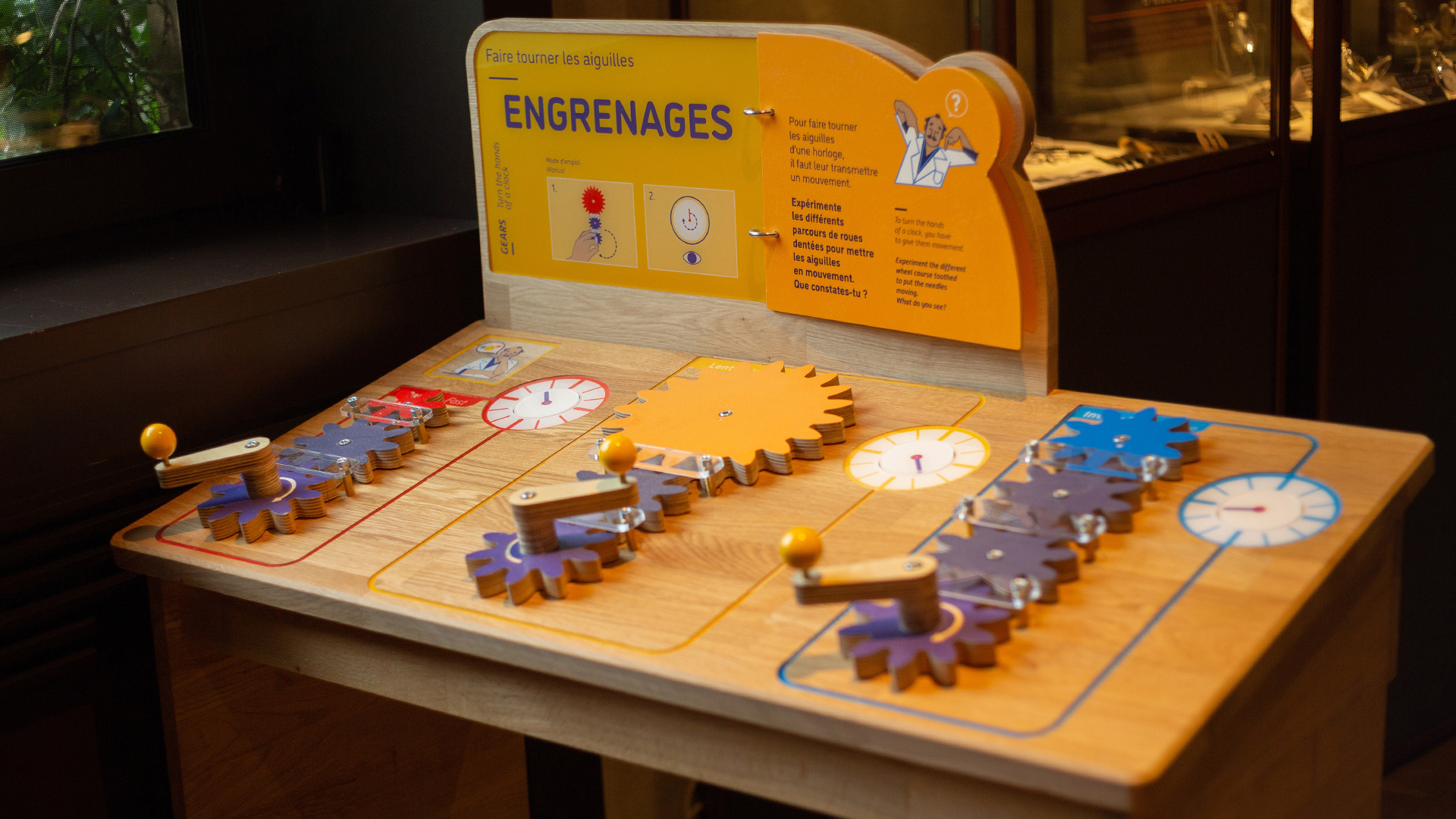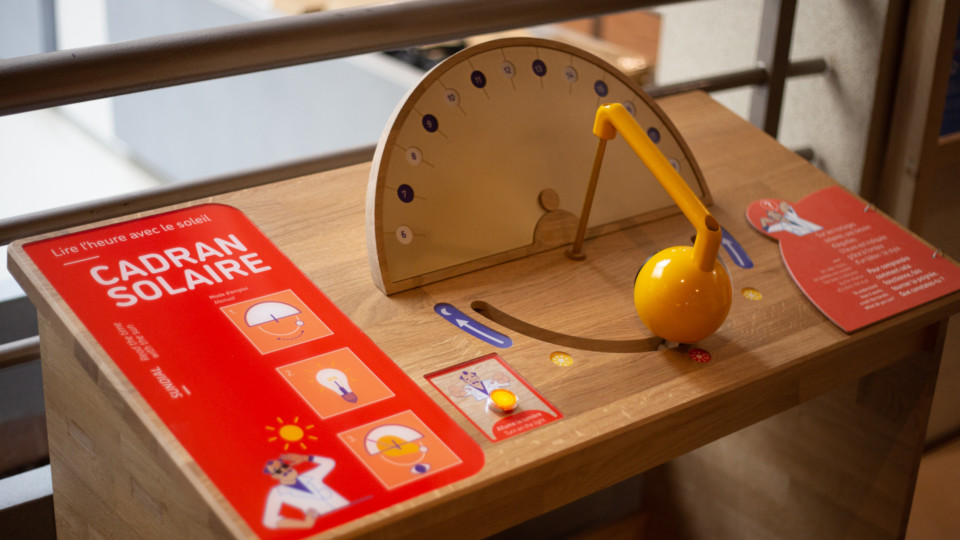Become an apprentice clockmaker
illustration – artistic direction – mediation – information design – ludeo-participative conception consultancy
Become an apprentice clockmaker
Learning by doing: a playful museum
experience for children
Date
– 2021
Client
– Musée de l’horlogerie
et du décolletage de Cluses
Role
– artistic direction
– illustration
– mediation
– information design
– Playful & Participatory
Design Consultancy

The Cluses Watchmaking Museum asked us to design an educational exhibit tailored to children, integrated within its permanent collections. The goal: to create seven interactive and playful modules to explain the fundamentals of watchmaking in an accessible and engaging way.
The objective is simple: learn by doing, become an apprentice clockmaker, and most importantly, have fun!




A hands-on museum trail for all ages
How does a clock work? What’s the function of a pendulum? How is electromagnetism used in watchmaking? What is a driving weight? What does the escapement do? How do gears transmit motion? And how can the sun tell time?
These questions shape a museum experience for kids and adults alike, including visitors with disabilities. Designed as an educational trail, the modules encourage hands-on learning and direct manipulation to build understanding through action.
Interactive exhibits to discover watchmaking
Each module explores a concept through play: turning gears, winding a clock, striking a bell, or tinting a metal piece. These interactive museum modules use physical gestures to create a direct connection with the underlying principles of mechanical timekeeping.








From concept to production
The seven modules, made mainly of oak, were handcrafted in the Montreuil workshops of Okoni. From CNC machining of wood, aluminum, and brass, to laser cutting, 3D printing, and UV printing on wood and plexiglass, every element was produced and assembled in-house.






My role: artistic direction and playful design consultancy
Believing strongly in the democratization of knowledge through hands-on learning, I contributed to this project as artistic director, illustrator, graphic designer, and consultant in participatory exhibit design.
To guide visitors, I created a playful narrative: follow Charles Poncet, a renowned local clockmaker turned illustrated character. He leads young visitors from one concept to another in a journey of discovery.
The visual identity is both clear and engaging: five alternating colors distinguish the modules while maintaining a cohesive design. Text instructions are intentionally minimal, appearing on interactive panels designed as a question-and-answer game. Each module is accompanied by an illustrated manual, making each educational experience intuitive and fun.






A playful museum design to inspire curiosity
This project combines museum mediation, educational exhibit design, and watchmaking for children. It transforms complex scientific principles into tangible, playful moments. By combining storytelling, craftsmanship, and interactivity, it makes technical heritage accessible to younger generations, through joy, discovery, and gesture.


